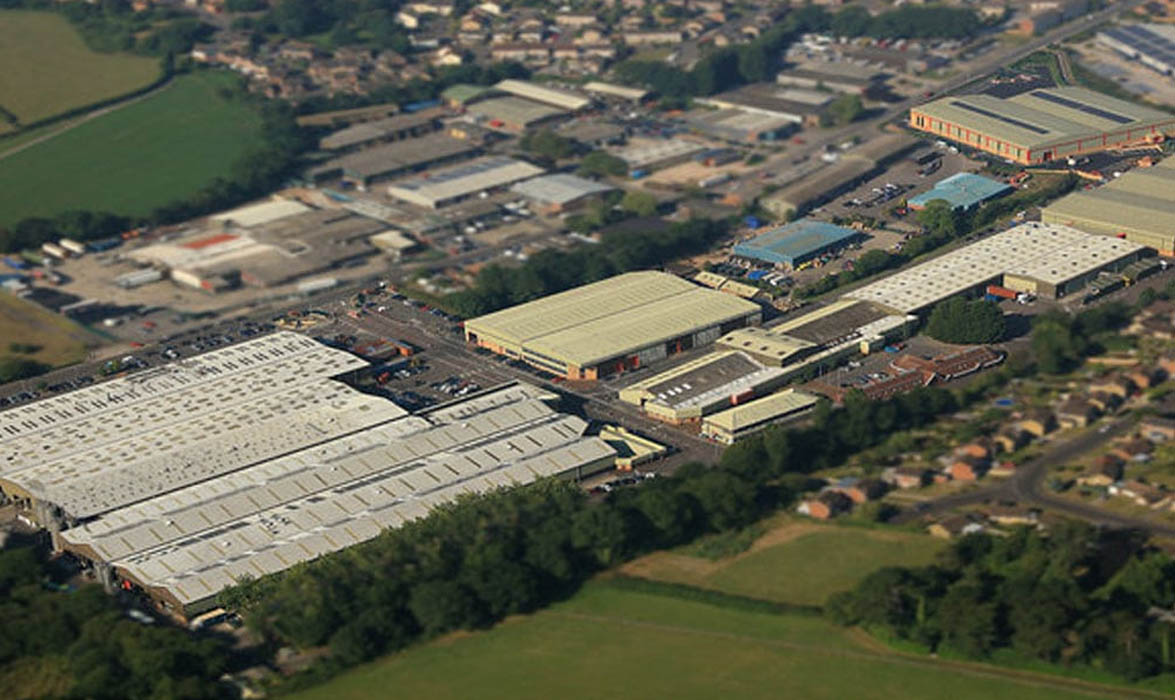
Numatic, a leading manufacturer of industrial, commercial and domestic cleaning equipment, is saving 21.8% on its gas consumption with a Trend building management system (BMS) from BG Energy Solutions (BGES).
BGES, an accredited Trend Technology Centre (TTC), designed, supplied and installed the BMS at Numatic’s 26-acre site in November 2015. Although the BMS is still in its first year of operation, the gas savings achieved mean that half of the initial investment has already been recouped.
The Chard, Somerset facility of Numatic International Ltd is home to 20 buildings and 1000 employees who help a staggering 6000 machines a day roll-off the production lines. It is not only the largest site of its type in the UK, but the place where the instantly recognisable Henry vacuum cleaner is manufactured.
The company, which has history dating back to 1969, has built its success on commitments to innovation, quality and value-for-money. In addition, Numatic also holds high its environmental credentials.
“Since 2009 we’ve been signed up to an initiative called the Climate Change Agreements scheme, which sets demanding targets to help reduce carbon emissions and improve energy efficiency,” explains Andrew Smith, the company’s Property and Energy Manager. “If we don’t hit the targets we can be served with penalties. However, we’ve had three targets since 2009 and worked hard to achieve all of them successfully.”
CONSTANT ENERGY EVALUATION
Numatic is constantly evaluating its energy use, both through awareness development and capital investment. However, Mr Smith admits that a lot of the “low hanging fruit” has been picked over the course of the past eight years, which makes it tougher to find improvements.
“We reached the point where we thought a BMS might offer a good way forward,” he says. “BGES visited site and listened to our requirements, and recommended that a Trend BMS would be the most suitable for our application.”
BGES is an open systems house, with experience of many BMS technologies on the market. “This means that we can suggest the right solution for a client’s specific needs, rather than tying them to a single controls manufacturer,” says Gareth Barber, BGES Managing Director.
“In Numatic’s case we recommended Trend based on a number of factors, including the size of the site, the requirement to integrate electric meters into the BMS, and Trend’s backwards-compatible hardware which makes it future-proofed.” Says Mr Barber.
THE INSTALLATION CHALLENGE
Once the order was placed, BGES was tasked with designing and installing the system. All of the larger buildings on site at Chard featured space heaters, all but one of which are gas-fired. In total, 50 space heaters required control by the BMS, with each one wired individually. Most of the space heaters were retained, although a small number were replaced.
“Previously, the heaters were controlled using local thermostats and electronic time clocks,” says Mr Smith. “However, staff could easily interfere with the settings or the devices could go wrong without anyone realising. We were getting complaints about poorly functioning heaters and failures. With this in mind, we wanted a system that would allow us to adjust temperatures and times easily, and to send an alarm in the event of fault so that we could attend to it quickly.”
Mr Smith says there was no disruption during the installation process, adding that he had been “impressed with BGES from the very start of the project”.
IMPRESSIVE RESULTS
The Trend BMS has now completed its first full year of controlling the space heaters at Numatic’s Chard facility, and the results have been impressive. Numatic uses ‘degree days’, a unit for determining the heating requirements of buildings that represents a fall of one degree below a specified average outdoor temperature (typically 18°C) for one day.
“Comparing 2016 to 2015, we have seen a 21.8% reduction in gas kWh per degree day,” states Mr Smith. “Considering that our gas bill (ignoring VAT) in 2015 averaged around £24,000 a month, a proportion of which was used for production processes, this significant saving on the space heating element means we have already recouped half of the original investment costs for the BMS system.”
Numatic now has a schematic front end on its new BMS system which shows all buildings on site, all heaters and their settings, ensuring that temperatures and times can be adjusted easily and quickly. Furthermore, BGES has now installed links to gas and electricity sub-meters at the Chard facility so that Numatic has more visibility on its energy use.
“We are already planning to expand the system further, hopefully to bring lighting, chillers and air compressors under the control of the BMS,” concludes Mr Smith. “Our average electricity bill is around £100,000 a month, so the potential for savings is considerable to say the least.”